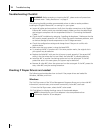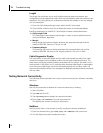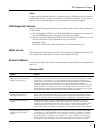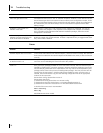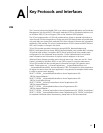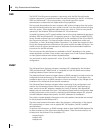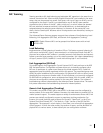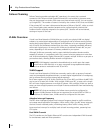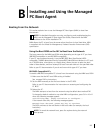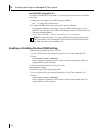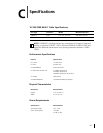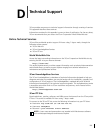
A Key Protocols and Interfaces
102
Failover Teaming
Failover Teaming provides redundant NIC operation in the event that a network
connection fails. When multiple Gigabit Ethernet NICs are installed in the same server,
they can be grouped into teams. Each team must have at least one NIC, but can support
up to eight NICs. The number of teams is limited by the number of NICs that are installed.
If the primary NIC in a team is disconnected because of failure of the NIC, cable, or switch
port, the secondary team member becomes active, redirecting both inbound and
outbound traffic originally assigned to the primary NIC. Sessions will be maintained,
causing no impact to the user.
VLANs Overview
Virtual Local Area Networks (VLANs) allow you to split your physical LAN into logical
subparts, to create logical segmentation of workgroups and to enforce security policies
among each logical segment. Each defined VLAN behaves as its own separate network,
with its traffic and broadcasts isolated from the others, increasing bandwidth efficiency
within each logical group. As many as 64 VLANs can be defined for each NIC on your
server, depending on the amount of memory available in your system.
Although VLANs are commonly used to create individual broadcast domains and/or
separate IP subnets, it is sometimes useful for a server to have a presence on more than
one VLAN simultaneously. Gigabit Ethernet NICs support multiple VLANs on a per-port or
per-interface basis, allowing flexible network configurations.
VLAN Support
Virtual Local Area Networks (VLANs) are commonly used to split up groups of network
users into manageable broadcast domains, to create logical segmentation of workgroups,
and to enforce security policies among logical segments.
Each Team supports up to 64 VLANs. Note that only 3Com NICs and Alteon AceNIC NICs
can be part of a team with VLANs. With multiple VLANs on a NIC, a server with a single
NIC can have a logical presence on multiple IP subnets. With multiple VLANs in a team, a
server can have a logical presence on multiple IP subnets and benefit from load balancing
and failover.
Adaptive Interrupt Frequency
The NIC driver intelligently adjusts host interrupt frequency based on traffic conditions,
to increase overall application throughput. When traffic is light, the NIC driver interrupts
the host for each received packet, minimizing latency. When traffic is heavy, the NIC
issues one host interrupt for multiple, back-to-back incoming packets, preserving host
CPU cycles.
Dual DMA Channels
The PCI interface on the Gigabit Ethernet NIC contains two independent DMA channels
for simultaneous read and write operations.
NOTE:
VLAN tagging is required to be enabled only on switch ports that create
trunk links to other switches, or on ports connected to tag-capable end-stations,
such as servers or workstations with 3Com NICs.
NOTE:
NICs that are members of a failover team can also be configured to
support VLANs. Because VLANs are not supported for an Intel LOM if a LOM is a
member of a failover team, VLANs cannot be configured for that team.



